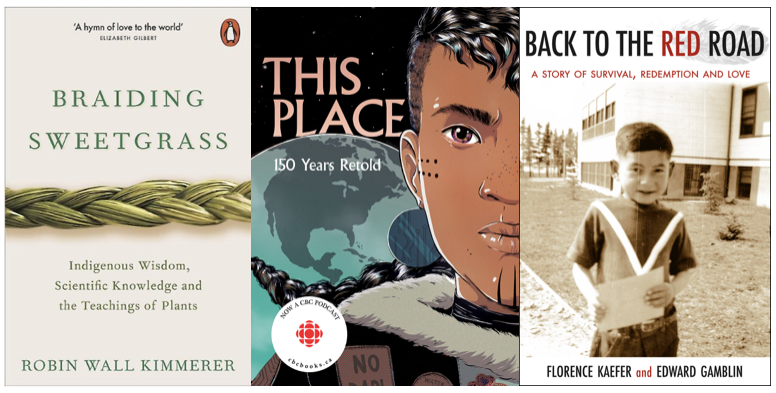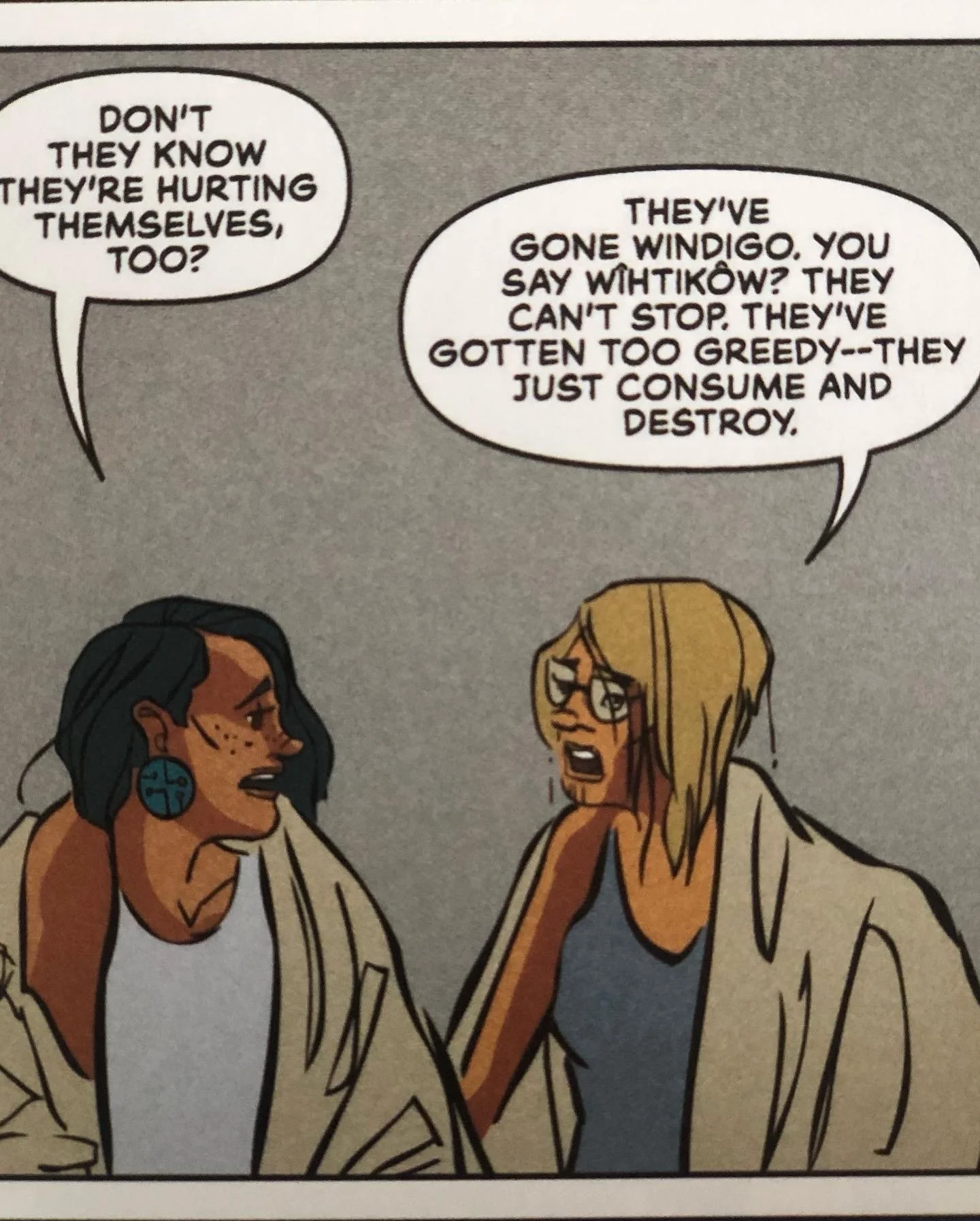Heartfelt Truths
A pathway to peace
Braiding Sweetgrass
This Place, 150 Years Retold
Back to the Red Road
I’m a slow reader, and in the past year I’ve read more books than ever, most of them on the First Nations Truth & Reconciliation journey, these tree in particular touched my heart.
The journey for my heart to hear, began with White Fragility on racism by Robin Diangelo, to illuminate my racist tolerance even though I considered myself an open accepting equality minded caring white gay male. Diversity and inclusion being on my radar, acceptance and travel, dating people of colour, I thought I was good to go. An indigenous friend encouraged me to read the book, only to discover I am a racist with white fragility in me because I don’t live with it daily, I don’t traveled the journey that people of colour face daily, for as long as I tolerate it, I’m part of it, for as long as it exists and I don’t actively interrupt it, I am by nature part of it. Guilty… lesson one.
Going on to read Chelsea Vowel’s Indigenous Writes, lawyer activist mother educator she illuminates us readers in the history and breadth of the indigenous peoples assimilation and injustices in Canada over the last 500 years of colonization and genocide. Who does that ? Christian Settlers do ! We live on stolen land and tried to eliminate people, culture, language, believing our ways were superior to those of the people who had lived here for many thousands of years… only now beginning to take long overdue action. A fantastic read that set out the groundwork for curiosity and disbelief in me. The timing with the Orange Shirt Day and children’s graves being discovered in old residential schools brought these atrocities home and to the forefront of my own and Canada’s public attention.
21 Things You May Not Know About The Indian Act by Bob Joseph added more facts and history. Collectively opening me up to listen more fully as I kept exploring.
Braiding Sweetgrass painted a more integrated series of stories marrying science, nature and traditions of indigenous wisdom and culture. Never take the first or the last or more than half. My heart was deeply moved, often re-reading chapters, with a tear running down my cheek. Our relationship to the land has been lost, Mother Earth provides for all life, I got to see that like the water, the air, the animals, the plants, we too have responsibilities towards this miraculous harmony. In particular the chapter on gratitude, when all our minds become one, we get to focus on the core common ground we all share here in life.
Today we have gathered and when we look upon the faces around us we see that the cycles of life continue. We have been given the duty to live in balance and harmony with each other and all living things. So now let us bring our minds together as one as we give greetings and thanks to each other as People. Now our minds are one.*
We are thankful to our Mother the Earth, for she gives us everything that we need for life. She supports our feet as we walk about upon her. It gives us joy that she still continues to care for us, just as she has from the beginning of time. To our Mother, we send thanksgiving, love and respect. Now our minds are one.
We give thanks to all Waters of the world for quenching our thirst, for providing strength and nurturing life for all beings. We know its power in many forms ~ waterfalls and rain, mists and streams, rivers and oceans, snow and ice. We are grateful that the Waters are still here and meeting their responsibility to the rest of Creation. Can we agree that Water is important to our lives and bring our minds together as one to send greetings and thanks to the Water ? Now our minds are one.
We turn our thoughts to all the Fish in the water. They were instructed to cleanse and purify the water. They also give themselves to us as food. We are gratefully that they continue their duties as we send to the Fish our greetings and our thanks. Now our minds are one.
This Alegiance to Gratitude goes on repeating the patern giving gratitude to the fields of plant life, the berries, the food plants, the medicine herbs and keepers of the medicine, all the trees of the earth, the beautiful animal life, all the birds, the four winds, thunder and storms, the sun, the moon, the stars, enlightened teachers, the Creator and Great Spirit, and anything we have left out, each time in being present in gratitude together, acknowledging “now our minds are one”. *
Imagine all humanity coming together in gratitude, all our minds are one. What we share in common matter more than that which divides us.
Moving on to This Place, 150 Years Retold, positioned to younger readers I loved it. Beautifully illustrated, 10 short stories written and illustrated by indigenous artist, rewriting Canadian history from the First Nations heroes point of view. Canada’s history is not pretty and has abused our hosts and keepers of this land for so many thousands of years, interrupting nature, people, common sense, dignity, kindness, mindfulness and good manners. Who shows up at someone else’s house and takes over, ruling over the hosts with cruelty and foreign rules. My favourite frame and line ~ “don’t they know they are hurting themselves too”… “they’ve gone Windigo (mad), they’ve gotten too greedy -- they just consume & destroy”.
From the book This Place, 150 Years Retold.
It seems Canada’s truth & reconciliation process is mostly in the truth phase, the impact of colonization is far reaching and devastating, many indigenous folks struggle and thankfully some are regaining control with self governance and self education, reclaiming culture. Justice Murray Sinclair suggested it will take 7 generations to heal if we work hard at healing our children… thankfully we have begun.
Back to the Red Road tells such a tale, where a 1950s residential school teacher Florence reconnects with her student Edward to learn of the atrocities that went on in the very school where she cared for young children. They become family sharing the story Edward began to write, that Florence finished after his death.
I’m just one man, of European decent, a privladiged settler who loves Canada, the wild nature, open spaces, clean air, water, freedom, healthcare, multiculturalism, yet shocked by the treatment of First Nations people over time. Apparently these truths are not common knowledge in Canada, and not taught in schools. I loved reading these books, disturbing as they are, and have more in the pile, including local accounts, and am delighted to see an extensive collection in our local library.
Are you curious ? Are you reading ? Do you care ?
As I learn, I wonder what can I do? So I participate with our local self governing Tla’amin Nation, attending cultural events, meeting real people proud of their grandchildren who are embracing traditions and history and dances almost lost in the genocide. When I ask what can I do, the kind and generous response is to show up and bring friends.
Pride lives on in strong people who have lived here for thousands of years, and who’ll continue to thrive.
As we learn to appreciate and share their time honoured values we might find ways to come together as one and respect Mother Earth, all humans and all living things on our precious life-giving planet whom we’ve forgotten to respect and care for in the name of progress and mindless destructive consumerism.
What will you read ? What will you do ? Who’s land do you live on ?
Finding a good way forward, for us all, healing, working together. Honouring knowledge, elders, ancestors, finding peace, it is possible and it is happening ~ what will you do ?
Maybe plant a tree, plant a garden, read a book, discover your local First Nations.
Thank you.
* From the book Braiding Sweetgrass by Robin Wall Kimmerer. Published Milkweed Editions 2013. Chapter 11 Allegiance to Gratitude ~ the actual wording of the Thanksgiving Address varies with the speaker. This text is the widely publicized version of John Stokes and Kanawahientun 1993.
All the books mentioned above can be found here www.bobbc.ca/first-nations
This Place, 150 Years Retold , the audio series adapted from the book, can be heard on CBC Podcast. And reading the book is richer with the beautiful visual art in this illustrated novel by 10 Indigenous artists and writers:

